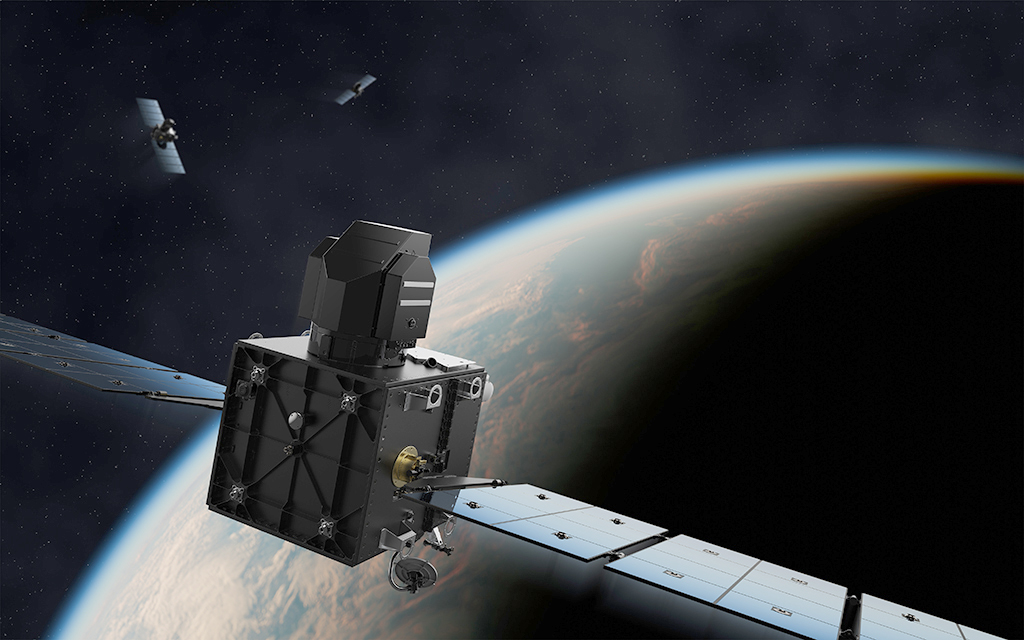This article is published in Aviation Week & Space Technology and is free to read until Jun 09, 2025. If you want to read more articles from this publication, please click the link to subscribe.

Tony Gingiss was named company CEO in December.
Millennium Space Systems is beginning a new era with fresh leadership at the helm.
New CEO Tony Gingiss—an aerospace industry veteran with more than three decades of experience—is leading the company as it evolves from a legacy of supporting bespoke, tailored small satellite programs to building dozens of spacecraft for the U.S. Space Force.
Gingiss took on the role in December, succeeding Jason Kim, who left Millennium last summer and became CEO of Firefly Aerospace on Oct. 1 (AW&ST Nov. 25-Dec. 8, 2024). Millennium was founded in 2001 and became a wholly owned, nonintegrated subsidiary to Boeing in 2018.
When the opportunity arose to lead Millennium, Gingiss says “it felt like the universe speaks to you sometimes.”
An astrodynamicist by training, he started his aerospace career as a fellow in the Draper Laboratory at the Massachusetts Institute of Technology and began his first full-time job at Hughes Electronics Corp. in 1992. As an analyst there, he was able to work both mission analysis and operations when the company merged both elements. “That operational experience really gave me some understanding of what the customers were about and what they experienced when we built a satellite for them,” he told Aviation Week April 2 at Millennium’s headquarters in El Segundo, California.
After getting a taste for product development working for a media and entertainment startup in 2000-02 during the dot-com boom, Gingiss returned in 2003 to Hughes—by then part of Boeing—and held multiple roles over the next 14 years supporting the company’s satellite systems portfolio.
During that time, he led an enterprise innovation initiative that built a road map for streamlining all elements of his portfolio. “We called it ‘Operation Audacious,’” he says. “We were told [to] look at everything, and anything was fair game.” During that stint at Boeing, Gingiss gained experience in spacecraft manufacturing and supply chain.
As CEO of Airbus OneWeb Satellites from 2017 to 2021, Gingiss helped the joint venture set up a new small-satellite factory in Merritt Island, Florida, and by early 2020, the production line was building 2-3 satellites per day, he says. Over the course of March 2020, as the COVID-19 pandemic spread across the globe, OneWeb launched its third batch of satellites for its planned high-speed internet constellation, but by March 27, the company had to file for Chapter 11 bankruptcy protection.
Gingiss was tasked by shareholders at the time with keeping the joint venture alive, “or OneWeb will never come out of bankruptcy,” he says. His team got inventive, selling xenon on the open market to raise cash, but the group also underwent voluntary pay cuts and furloughs to bring costs down. Satellite production slowed to one unit per week.
OneWeb was rescued from bankruptcy in July 2020, when the U.K. government and Indian telecommunications firm Bharti Global each committed $500 million in capital to bolster the company’s funding.
That experience at OneWeb—his first as a CEO—was pivotal for Gingiss. “I got to see the fruits of my labor, and I got to see how they behaved when they were under an existential threat,” he says. After the Merritt Island factory was back up and running, Gingiss left OneWeb, eventually joining Virgin Orbit as chief operating officer in early 2021 and gaining experience in the launch market. He then took on the same role two years later at Terran Orbital, a small-satellite company now owned by Lockheed Martin.
Joining Millennium in December felt like a homecoming for Gingiss, as it was a nonintegrated subsidiary of a company where he had spent many formative years in his career. “But it was also coming to a company . . . that had a lot of that disruptive innovator culture of ingenuity, drive [and] scrappiness,” he says.
His first priority as CEO was to “get smart” about the company. Then he looked for “quick wins” to make changes that were efficient and effective. One example was merging the company’s shipping, receiving and inventory responsibilities into its global supply chain organization and hiring a new director to drive that team.

As he nears his 100-day mark on the job, he is wrapping up a strategy to set some of Millennium’s “bigger rocks” rolling over the next two months. Today, Millennium’s workforce sits at approximately 975 personnel; the company plans to add more.
The company is transitioning from a history of developing smaller batches of vertically integrated satellites for experimental or bespoke missions to building dozens of spacecraft at one time. While the “onesie-twosie” custom spacecraft programs will continue to be a focus, new, larger contracts to build missile defense satellites for the Space Force are “our opportunity to demonstrate we can deliver,” Gingiss says.
The company is expanding its production facilities at Boeing’s satellite campus in El Segundo, specifically to support a $414 million contract with the Space Development Agency. The Fire-Control On-Orbit Support to the Warfighter (F2) program involves an eight-satellite prototype constellation and ground system to provide advanced fire control capabilities to help detect, track and warn against advanced threats, including hypersonic missiles. L3Harris Technologies is developing the infrared payloads.
Millennium is building 19,400 ft.² of new production space at the Boeing facility to serve the F2 program, Gingiss says. With the expansion, Millennium's production capacity will grow from its current footprint of approximately 43,000 ft.² across the company's headquarters and its Boeing campus facilities to approximately 60,000 ft.² The new high bays should be operational by the third quarter of 2025, and the first F2 satellites should come off of the line by year-end, he adds.
The company recently completed the F2 critical design review, less than 10 months after receiving authorization to proceed with the program, according to an April 7 statement. The satellites and ground system are scheduled for delivery in 2026, and launch is slated for 2027.
Millennium also is building 12 satellites and one ground system for the Space Force’s Missile Track Custody program, scheduled to begin launching in late 2026 for operations in medium Earth orbit. The company plans to use its existing production lines at Boeing to build those spacecraft, Gingiss says.
Gingiss sees opportunities for Millennium to contribute to the Defense Department’s growing focus on space superiority and to support the burgeoning commercial space market. “We have a suite of products across multiple orbital regimes . . . from single [units] to proliferated constellations, so I think we’re actually really well positioned to do both,” he says.
Millennium’s missile defense portfolio will continue to be a key area of focus, as will the company’s work with NASA on programs such as the Tandem Reconnection and Cusp Electrodynamics Reconnaissance Satellites mission, Gingiss says. Millennium is building two spacecraft under that program, and at least one is projected to launch this year.
Editor’s note: This article has been updated to reflect that OneWeb launched its third batch of satellites in March 2020 and that Millennium is expanding its production facilities’ footprint from approximately 40,000 ft.² to 63,000 ft.²



